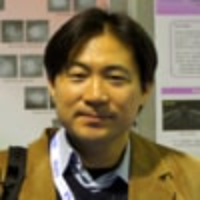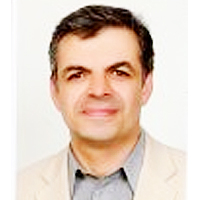In vitro beneficial effects of a flax extract on papillary fibroblasts define it as an anti-aging candidate
Published on: 5th May, 2021
OCLC Number/Unique Identifier: 9045687547
Objective: During aging, skin undergoes structural, cellular and molecular changes, which not only alter skin mechanical properties but also biological and physiological functions. Structurally the epidermis becomes thinner, the dermal epidermal junction flattens and the extra-cellular matrix component of the dermis is disorganized and degraded. The dermis is composed of two compartments: The Reticular dermis is the deepest and thickest part while the upper layer, the papillary dermis, which is much thinner and is in close contact with epidermis, plays an important role in the structure and function of the skin. We have recently shown that the papillary dermis was preferentially affected by skin aging because the activity of fibroblasts in this region was especially altered as a function of age. The purpose of this study was to investigate the capacity of a flax extract as anti-aging component.
Method: We investigated the capacity of a flax extract to stimulate or restore the activity of papillary fibroblasts from young and old donors in cultured monolayers and in reconstructed skin. Several biological markers of extracellular matrix homeostasis and mechanical properties were investigated.
Results: The tested flax extract seemed to improve parameters known to change with age: I/ In monolayers after treatment the number of aged fibroblasts increased II/ In reconstructed skin the flax extract appears to positively regulate some biological activities; particularly in aged fibroblasts where the deposition of laminin 5, fibrillin 1, procollagen I were increased in the dermis and the secretion of specific soluble factors like MMP1, MMP3 and KGF were regulated to levels similar to those observed in young fibroblasts III/ Mechanical properties were improved particularly for elastics parameters (R5, R2 and R7).
Conclusion: The flax extract is a promising anti-aging compound. The treatment of aged papillary fibroblasts resulted in a return to a younger-like profile for some of the studied parameters.
We may need to reconsider when to apply sunscreen in our daily life
Published on: 22nd October, 2019
OCLC Number/Unique Identifier: 8299748488
Broad-spectrum sunscreens are now widely used worldwide as an adjunct to help prevent sunburn, skin cancers and premature skin aging. In the United States, all persons older than 6 months are recommended to apply sunscreen to all sun-exposed skin from toes to head except eyes and mouth even on cloudy days. Such a recommendation is apparently based on concepts that exposure to sunlight damages the skin, the damage is cumulative and hence any sun exposure should be minimized or prevented. This communication raises several questions suggesting that the above recommendation may need to be reconsidered. For example, numerous previous studies have indicated many potential health benefits from non-burning sun exposure including protection against sunburn, melanoma, colorectal cancer, breast cancer and prostate cancer, increasing vitamin D synthesis, helping sleep, reducing blood pressure, heart attack and stroke. Recent studies suggested that regular lifetime non-burning sun exposure may not result in premature skin aging and the skin aging is mainly caused by the intrinsic factor. Skin aging or whole-body aging has been recently postulated to be mainly attributed to a gradual reduction in cardiac output/index with age and a new anti-aging or age-reversing nutritional theory has been proposed. An apparent lack of long-term cumulative sunray damage was also supported by reported age independence in incidences of sunburn and skin cancers. It is of interest that the current US policy is different from that of World Health Organization and Australia recommending the need of sun protection only when UV Index is 3 or greater. In view of the above, some general guidelines regarding when to best apply sunscreen are proposed.
Pharmacological Manipulation of the Aging Pathways to Effect Health Span and Lifespan with Special Reference to SGLT2 Inhibitors as Powerful Anti-aging Agents in Humans
Published on: 30th October, 2024
Calorie restriction has been shown to slow the aging process in numerous organisms including primates. Caloric excess states, such as type 2 diabetes, are associated with accelerated aging and the incidence and severity of chronic diseases. The nutrient-sensing pathways and intestinal microbiome are important systems that affect aging and chronic disease development. This manuscript reviews the various pathways involved with aging and chronic disease development and examines the pharmacological manipulation of these systems which appear to slow aging and the chronic diseases of aging in experimental model organisms and collaborating human data when available. Finally, the abundance of experimental and human data suggesting the newer diabetic medications, the sodium-glucose transport inhibitors, are potent anti-aging agents is provided.




